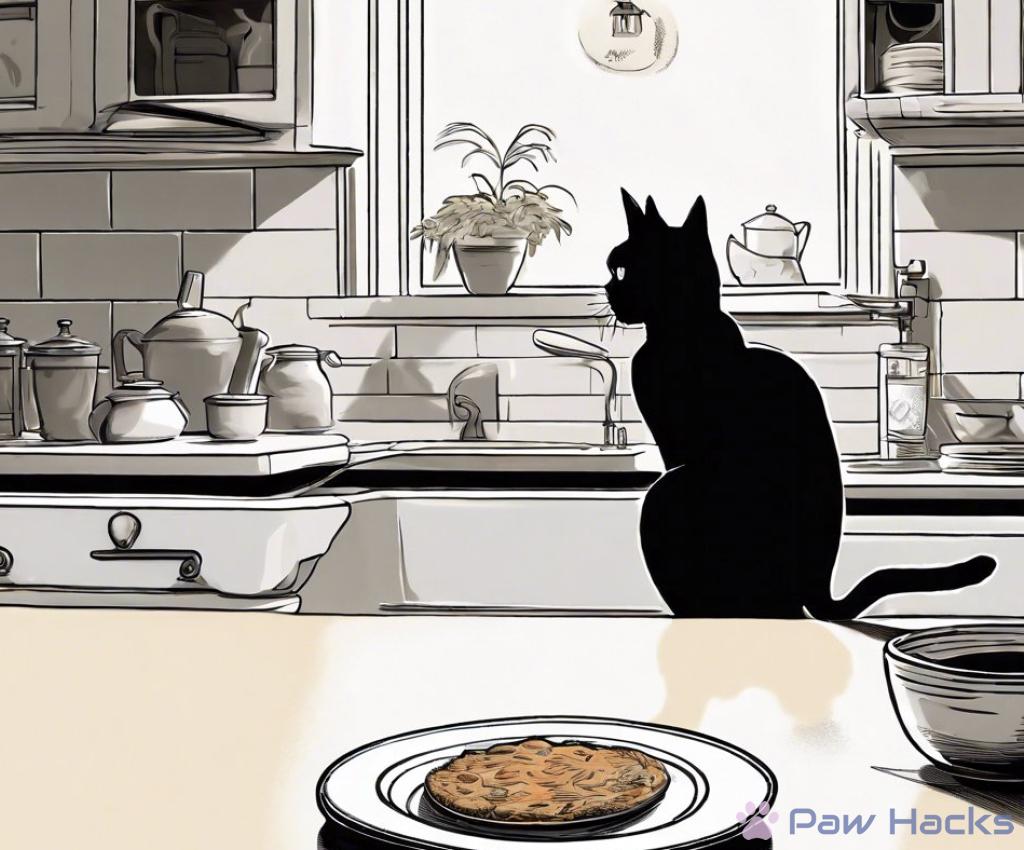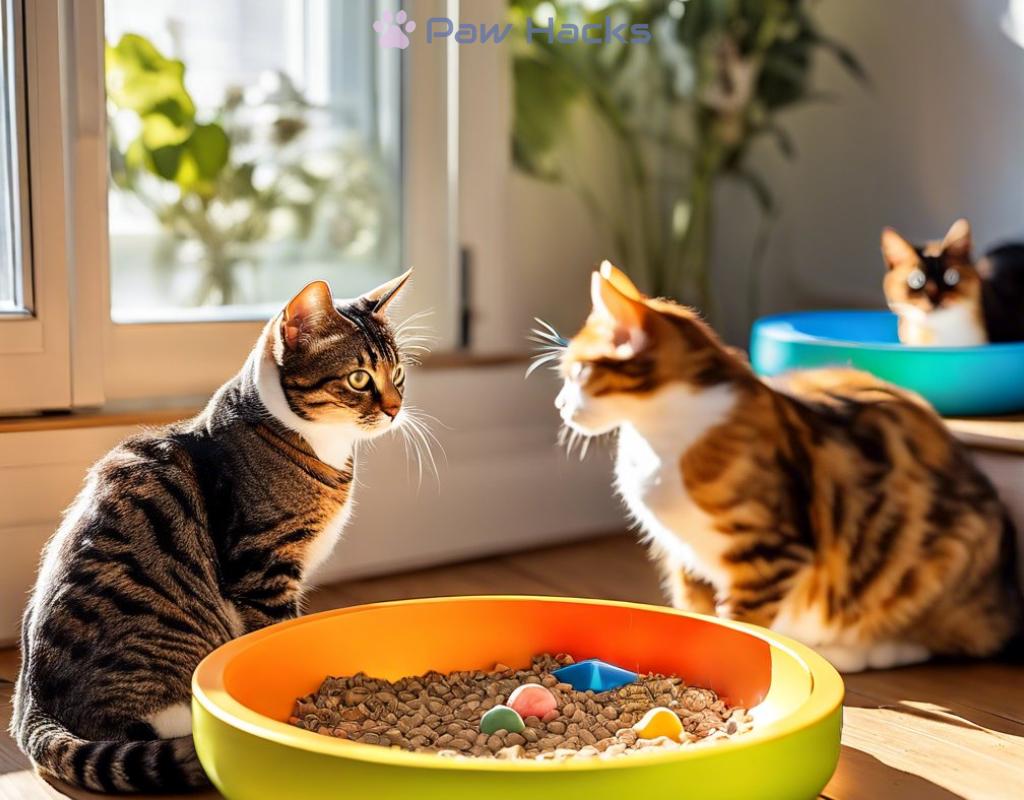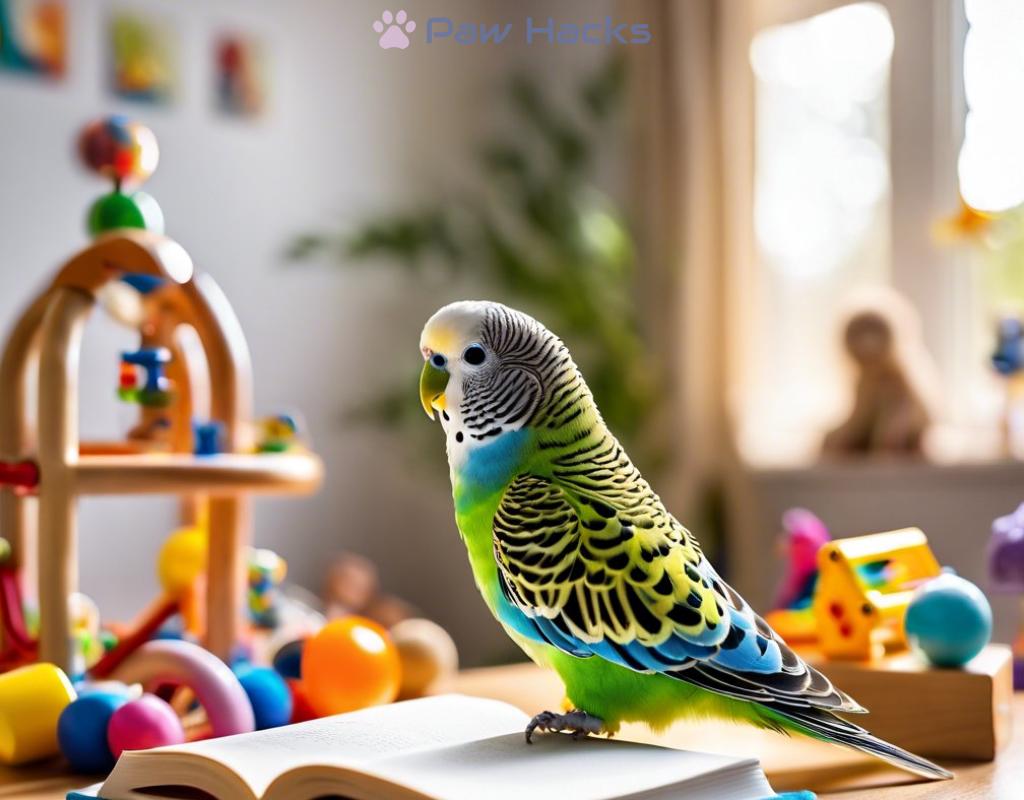Stopping Food Stealing in Multi-Cat Homes
Understanding Feline Behavior: Why Cats Steal Food

Cats are known for their curious nature. This trait can lead them into trouble, especially when it comes to food. When one cat sees another enjoying a meal, their instinct is to investigate. This curiosity can escalate into food-stealing behavior, as they may not understand the difference between their food and their housemate’s meal.
Understanding this behavior can help cat owners manage and prevent food theft in multi-cat households.
In a multi-cat environment, food can become a coveted resource. Cats often feel the need to compete for limited resources, which might trigger food-stealing behavior. This competition can stem from various factors including size, age, or even personality differences among the cats.
To better illustrate the competitive nature of cats, here’s a comparison of behavior:
| Cat Type | Behavior | Tendency to Steal Food |
|---|---|---|
| Dominant Cat | May guard food bowls and intimidate others | High |
| Submissive Cat | May steal food to avoid confrontation | Moderate |
| Playful Cat | May steal food out of playfulness | Low |
Even the most pampered house cat retains some of their wild instincts. Stealing food can be seen as a reflection of their natural hunting behavior. In the wild, cats hunt for food and often take advantage of any opportunity that presents itself. This instinct can manifest in the home as they attempt to ‘hunt’ food that is not theirs.
To manage this instinct effectively, it is crucial to provide adequate food for all cats and ensure each cat has its own space during mealtime.
Creating Safe Feeding Zones: How to Protect Each Cat’s Meal
Feeding time in a multi-cat household can often become a battleground. To ensure that every feline gets their rightful share without the fear of being ambushed, creating safe feeding zones is essential. These designated areas not only help in managing food-stealing behavior but also promote a peaceful dining experience among your furry companions.
One of the most effective strategies for preventing food theft is to set up individual feeding stations for each cat. This allows each cat to eat in peace, reducing the temptation to steal from one another. Here are some tips to create these feeding stations:
- Location is Key: Choose quiet and low-traffic areas of your home where each cat can feel secure while eating.
- Use Separate Bowls: Invest in different food bowls for each cat to avoid any confusion when it comes to mealtime.
- Consider Elevation: If you have a dominant cat, placing their food bowl on an elevated surface can give them a sense of security and discourage others from stealing.
Another effective approach is to establish a feeding schedule that suits all cats in the household. This can help minimize competition during mealtime and enables each cat to focus on their food.
By feeding your cats at specific times, you can better manage their hunger cues and food-stealing tendencies. Monitor their eating habits and adjust the schedule accordingly to ensure every cat is satisfied and less likely to pilfer from others.
Interactive feeding toys and puzzles can transform mealtime into a stimulating activity for your cats. These devices not only slow down their eating but also divert their attention from potential food theft. By engaging their natural hunting instincts, cats are less likely to focus on their housemates’ meals.
When introducing these feeding tools, ensure that each cat has access to their own toy to prevent conflicts. This way, you create an environment where each cat can enjoy their food while reducing the likelihood of stealing.
Feeding Strategies: Tips to Discourage Food Theft Among Cats
Managing a multi-cat household can be rewarding, but it often comes with its own set of challenges, especially when it involves food theft. Ensuring that each cat has a fair chance to enjoy their meals without interference requires thoughtful strategies. By implementing effective feeding techniques, you can minimize food-stealing behaviors and create a harmonious dining atmosphere for your feline companions.
One of the most effective ways to tackle food theft is by tailoring meal approaches that cater to the unique needs of each cat. Not all cats are the same in terms of their eating habits or social dynamics. For instance, some cats may prefer to eat alone, while others thrive in a communal setting. By paying attention to these preferences, you can create a meal plan that reduces the chances of stealing. Consider feeding your cats in different rooms or at different times, thereby allowing each cat to eat in a stress-free environment. This not only lowers competition but also promotes a more relaxed mealtime experience.
To further combat food theft, engaging feeding techniques can be utilized to distract and entertain your cats. Using puzzle feeders or food-dispensing toys can make mealtime a fun and stimulating experience. These devices require cats to work for their food, which not only slows down their eating but also diverts their attention from their housemates’ meals. It’s crucial to ensure that each cat has their own feeding toy to prevent conflicts and allow for a personalized dining experience. Moreover, these interactive methods cater to their instinctual behaviors, making mealtime both rewarding and challenging.
Lastly, regular monitoring and adjusting of feeding strategies is vital. Keep an eye on your cats’ eating habits and interactions during mealtime. If you notice persistent stealing behavior, it may be time to reevaluate your current strategies. Are the feeding stations set up effectively? Are the feeding toys engaging enough? By being attentive and making necessary adjustments, you can create a dynamic feeding environment that adapts to your cats’ evolving needs. Remember, a peaceful feeding routine is essential not only for nutrition but also for the overall well-being of your feline family.
Monitoring and Adjusting Portions: Ensuring Every Cat Gets Their Share
In a multi-cat household, ensuring that each feline receives their fair share of food can be a complex task. With varying personalities and eating habits, it’s essential to monitor and adjust portions effectively. By paying close attention to your cats’ individual needs, you can foster a more harmonious mealtime and reduce the likelihood of food theft.
Every cat is unique, and their dietary requirements depend on several factors, including age, weight, activity level, and health conditions. Recognizing these differences is crucial when determining portion sizes. For instance, a younger cat may require more calories to support its energy levels, while an older cat may need smaller, more frequent meals to maintain a healthy weight. By tailoring portions based on these factors, you can ensure that each cat is satisfied without the urge to steal from others.
Another vital aspect of managing food portions is observing how each cat interacts with their food. Some cats may be more aggressive eaters, while others might take their time. Paying attention to these behaviors can provide insights into how to adjust portions effectively. If one cat consistently finishes their meal quickly while another leaves food behind, it might be worth re-evaluating the feeding process. You may find that the faster eater requires a slightly larger portion or that the slower eater benefits from a smaller, more frequent feeding schedule.
As your cats grow and their needs change, so should their food portions. Regularly reassessing their dietary requirements will help keep food-stealing tendencies at bay. Implementing a system of periodic evaluations can be beneficial. For example, every few months, consider weighing your cats and consulting with your veterinarian to discuss any necessary adjustments. This proactive approach not only promotes their health but also fosters a sense of security during mealtime, decreasing the likelihood of competition over food.
Utilizing Puzzle Feeders: Engaging Cats and Preventing Theft
Creating a harmonious environment in a multi-cat home can be challenging, especially when food theft becomes a common occurrence. One effective strategy to combat this issue is by incorporating puzzle feeders into your cats’ feeding routine. These engaging devices not only make mealtime more enjoyable but also serve as a distraction from the temptation of stealing food from their housemates. By understanding how puzzle feeders work and the benefits they provide, cat owners can create a more peaceful dining atmosphere for their feline companions.
Puzzle feeders are designed to stimulate a cat’s natural hunting instincts, turning the act of eating into an interactive game. These devices often require cats to solve a puzzle or manipulate the feeder to access their food. This engagement not only slows down their eating but also keeps their minds occupied, reducing the likelihood of them eyeing another cat’s meal. When cats are focused on working for their food, they are less likely to engage in food-stealing behavior, as their attention is diverted to the task at hand.
When selecting a puzzle feeder, it’s important to consider your cats’ individual preferences and skill levels. Some cats may take to a complex feeder quickly, while others might need a simpler design to start. Introducing these feeders gradually can help cats become accustomed to the new feeding method. Always ensure that each cat has access to their own puzzle feeder to prevent competition and potential conflicts. As they learn how to use the feeders, you’ll likely notice improvements in their behavior, as they become more engaged during mealtime, leading to a reduction in food theft.
In addition to the mental stimulation provided by puzzle feeders, they can also contribute to healthier eating habits. By slowing down the pace at which cats consume their food, these devices can help prevent issues such as obesity or digestive problems that often arise from rapid eating. As a result, your cats not only enjoy their meals but also maintain a healthier lifestyle, which can contribute to their overall well-being.
In summary, incorporating puzzle feeders into a multi-cat household can effectively curb food-stealing behavior while providing both mental and physical stimulation for your feline companions. By transforming mealtime into a fun challenge and ensuring that each cat has their own feeder, you can foster a more peaceful and enjoyable dining experience in your home.
Share this content:



